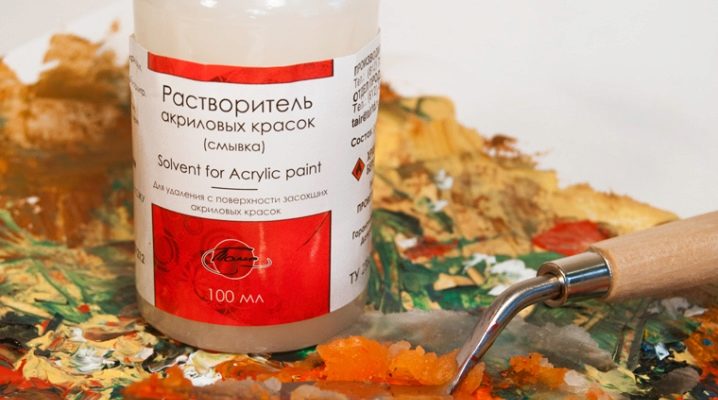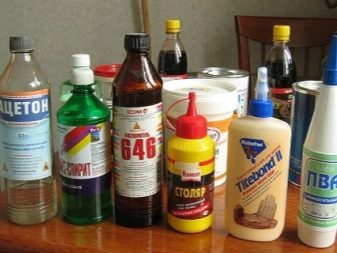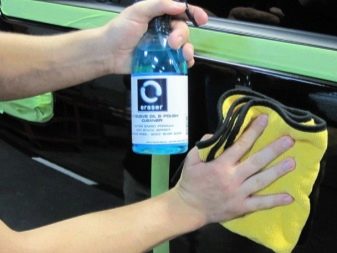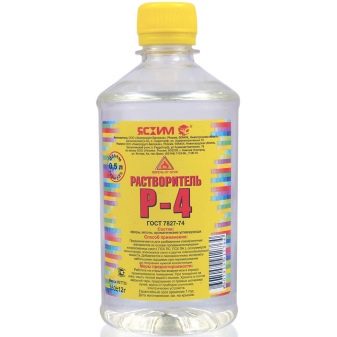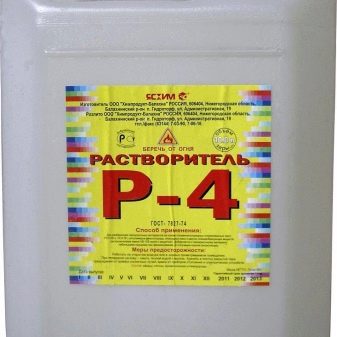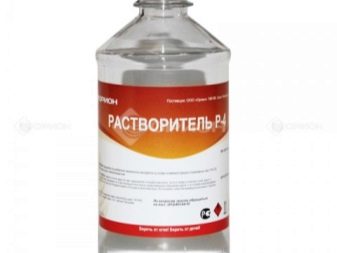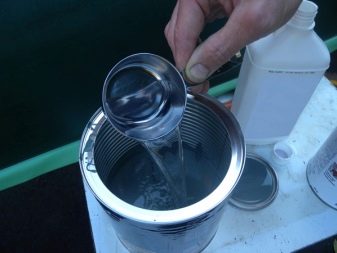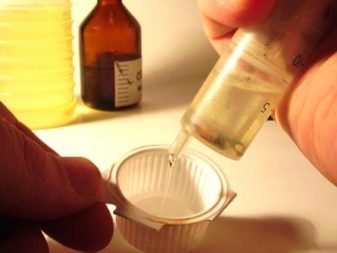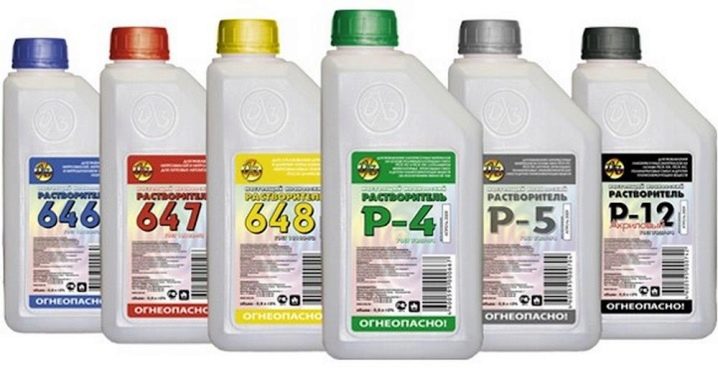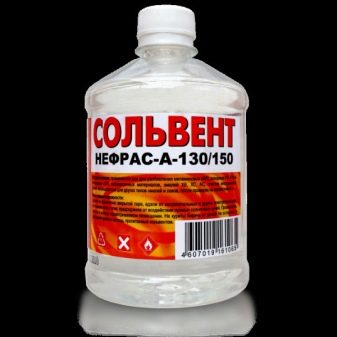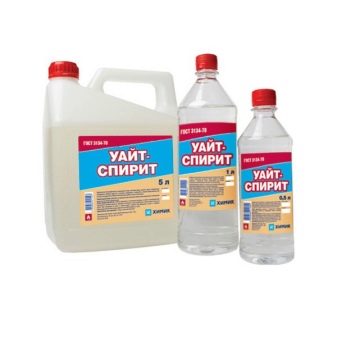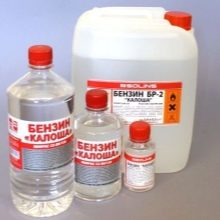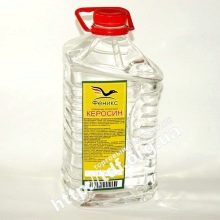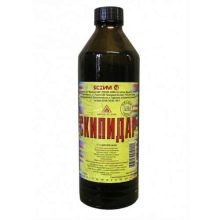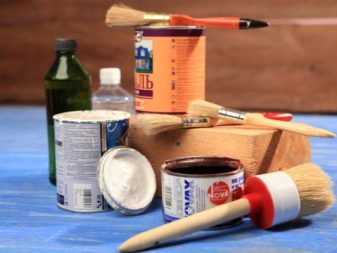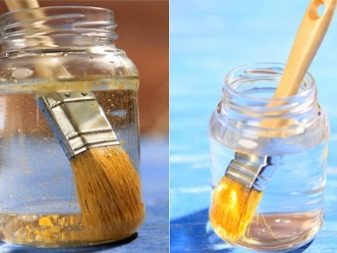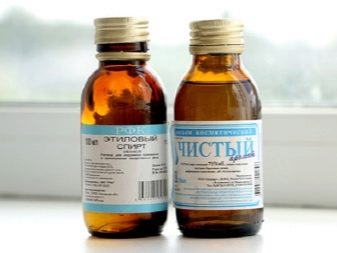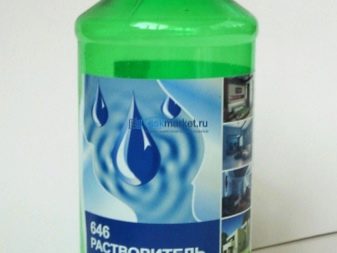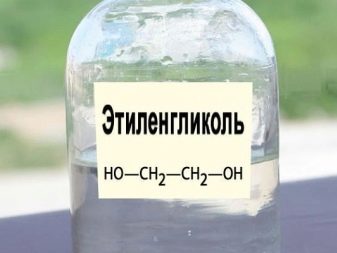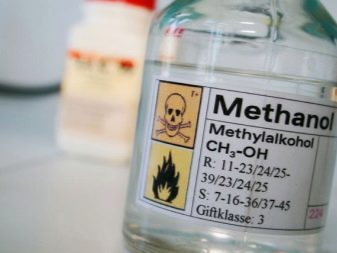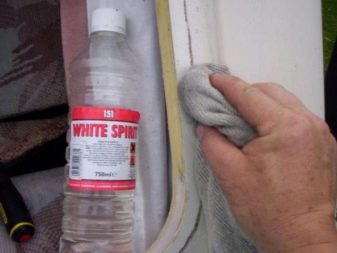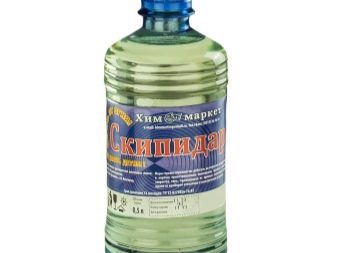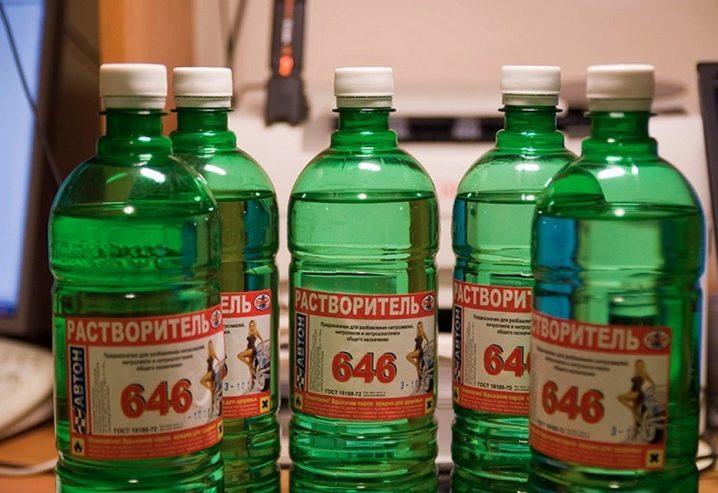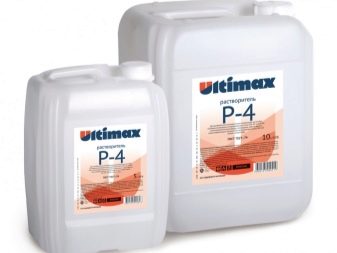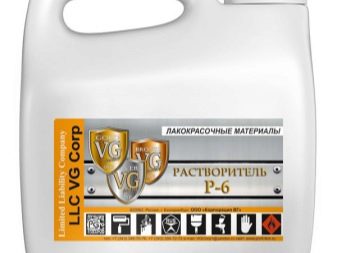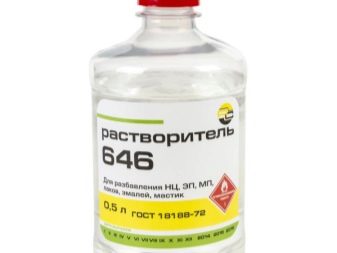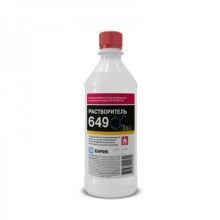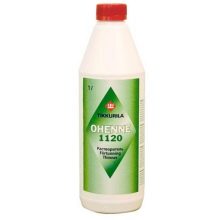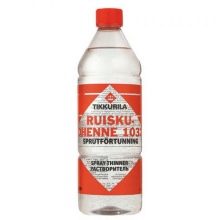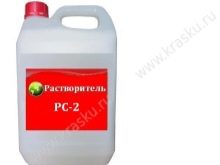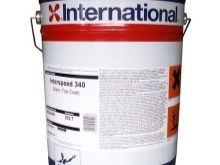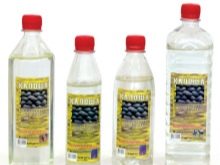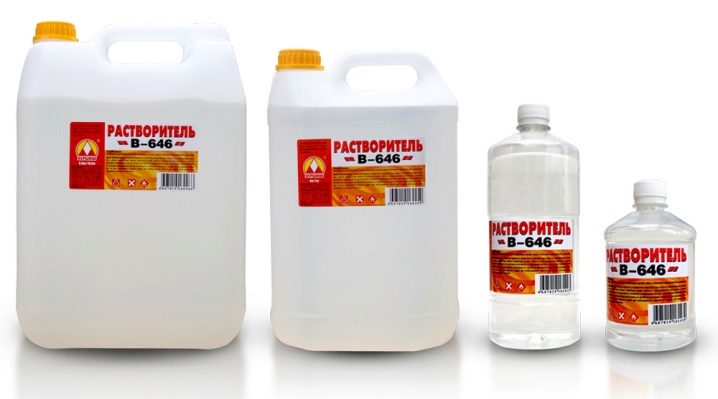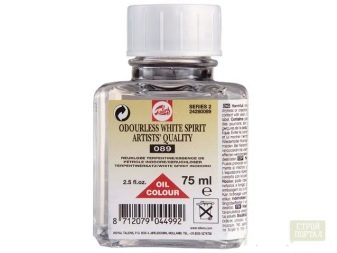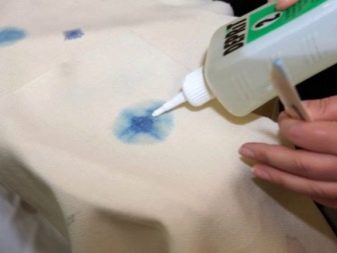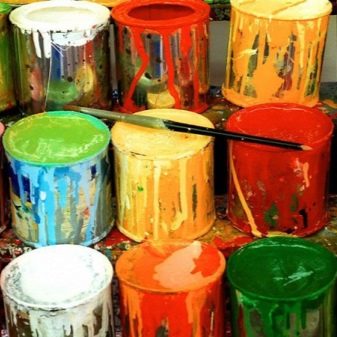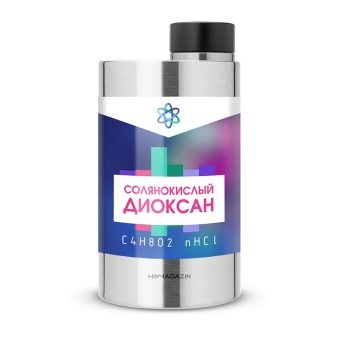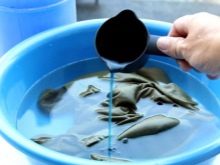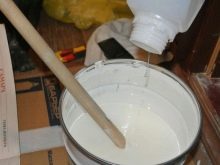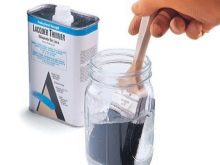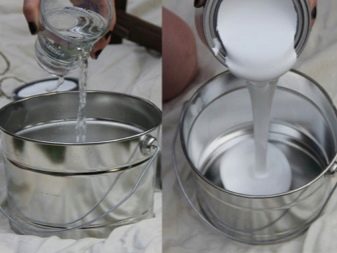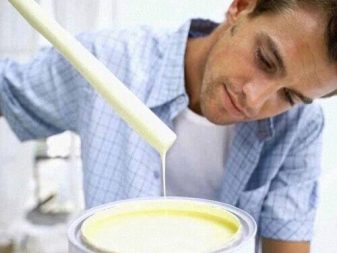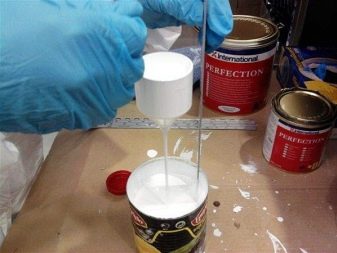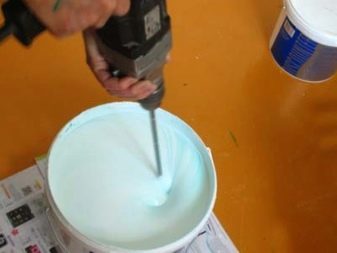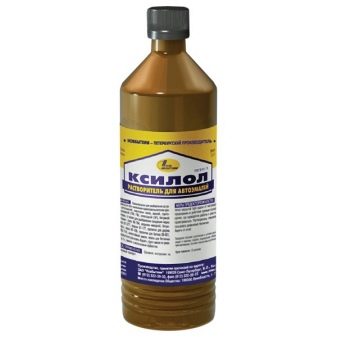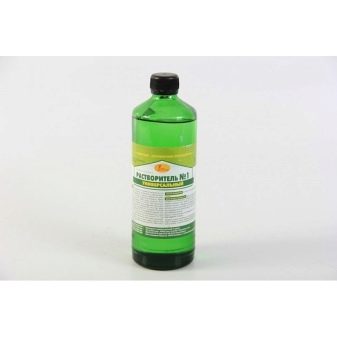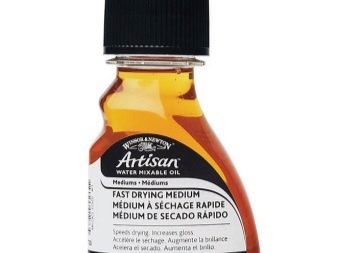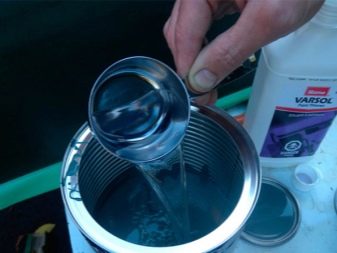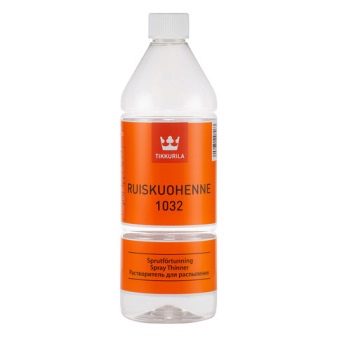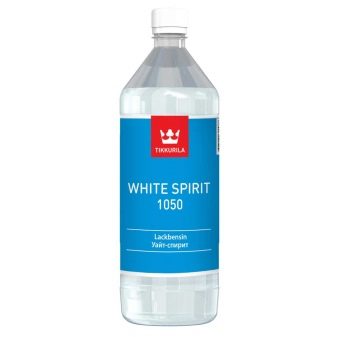Solvent: properties and application
Solvents are compounds of the inorganic and organic type, which have the properties to dissolve a variety of substances. They are widely used in industry and in everyday life.
What it is?
An excellent example is the use of a solvent to dilute thick paint. When volatile fractions evaporate from it, it becomes more viscous. For its further use, it is necessary to reduce its density. This will help exactly the solvent.
There is no universal solvent in nature.which can be used to dissolve any material. It is necessary to select the option that will help cope with the goal.
To create tools that can dissolve several different substances, manufacturers create multi-component compositions. They include several single-component variants at the same time.They differ in technical characteristics.
Means R 4, which is made according to GOST 7827-74, includes volatile solvents of organic type:
- 62% are hydrocarbons (toluene);
- 26% ketones (acetone);
- 12% esters (butyl acetate).
Thinner P-4 is an excellent choice for diluting paints, enamels and primers, as well as putties. Mixed media are characterized by versatility, as they are designed to fulfill several purposes.
The main task of the P-4 is to dilute to the consistency of paints and varnishes for further painting.
Main tasks:
- do not interact with the material, as well as quickly evaporate after application to the product;
- be non-hygroscopic, i.e. retain all properties when in contact with water;
- A little solvent should be poured into the paint so that they mix easily, resulting in a homogeneous mixture.
Diluents cannot independently dissolve the desired polymer, but its structure is not disturbed. In reality, most buyers prefer a mixture of solvents, which are called license based on their labeling.
For example, solvent P-4, containing toluene and acetone, is the optimal solution for working with alkyd paints or varnishes. Ordinary water can be used to dilute water. But in order to slightly reduce the viscosity of the paint, you should pour in water a little and wait for complete dissolution.
Special features
All solvents can be divided into inorganic and organic, if we take the basis of their origin.
The first group is not in demand, since it includes substances that consist of a liquid ammoniac solution, solutions of phosphoric acid salts, amines and water. Inorganic thinners have a characteristic unpleasant odor.
The second group is based on the physical properties of solvents:
- Volatile - solvent, white alcohol, gasoline. They are used to dilute acrylic and oil materials and enamels. Many members of this group quickly ignite, so you should be very careful when interacting with them. It should be located away from the fire, and also not to use them in rooms with high air temperature.
- Mid-volatile - kerosene is a prime example.It is used to dilute oil and acrylic paints.
- Hardy - Turpentine belongs to this group. Its purpose is to dilute the oil paint, varnish or enamel.
Organic type solvents have both advantages and disadvantages. The main advantage is that they are used as a diluent for various substances. If we talk about the minuses, it is worth noting that they retain a rather unpleasant odor for a long time and are characterized by toxic fumes that easily ignite and can also cause serious vapor poisoning.
It is impossible to name the strongest solvent, since each type is designed to dissolve or dilute a particular agent.
To clearly understand what solvent is suitable for a particular paint, you need to familiarize yourself with their description and the table of conformity. It will help to understand the difference between different species.
Solvent | Paint type |
Homogeneous solvents | |
Water | Solvent (more precisely thinner) of acrylic paint, water-based paint and other water-dispersion paints and nibbles |
Gasoline (gasoline-galosh, nefras) | Solvent oil and bitumen paints, varnishes, enamels |
Turpentine | Solvent oil and alkyd styrene paints |
White Spirit | Solvent oil and alkyd paints and enamels (including PF-115, PF-133, PF-266), bitumen mastics, varnish GF-166, primer GF-021 |
Solvent (petroleum) | Solvent of glyptal and bituminous varnishes and paints (including melaminoalkidnyh). |
Xylene (petroleum) | Solvent of glyptal and bituminous varnishes and paints, epoxy resin. |
Acetone | Perchlorovinyl paint remover |
The combined (number) solvents | |
Solvent 645 | Nitrocellulose solvent |
Solvent 646 | Universal solvent for nitrokrasok, nitro enamels, general purpose nitrolacs, also epoxy, acrylic, solvent |
Solvent 647 | Solvent of nitro enamels, nitrolacks for cars |
Solvent 649 | The solvent NC-132k; GF-570Rk |
Solvent 650 | Solvent auto enamel NTS-11; GF-570Rk |
Solvent 651 | Oily solvent |
Solvent R-4 | Polyacrylate, perchlorovinyl, paints and varnishes with copolymers of vinyl chloride with vinylidene chloride or vinyl acetate |
Solvent R-5 | Perchlorvinyl, polyacrylate, epoxy |
Solvent R-6 | Melamine-formaldehyde, rubber, polyvinyl-butyral |
Solvent R-7 | Dilution of varnish VL-51 |
Solvent R-11 | Perchlorvinyl, polyacrylate |
Solvent R-14 | Epoxy enamels, curable with isocenate hardeners |
Solvent R-24 | Perchlorvinyl |
Solvent R-40 | Epoxy |
R-60 solvent | Cresol-formaldehyde, polyvinyl butyral |
Solvent Р-83 | Epoxyether |
Solvent R-189 | Solvent for polyurethane varnish |
Solvent R-219 | Polyester resin solvent |
Solvent Р-1176 | Solvent of polyurethane paints and enamels |
Solvent RL-176 | Polyacrylate, polyurethane |
Solvent RL-277 | Polyurethane |
What are the types?
Modern solvent manufacturers offer a wide variety of organic and inorganic options that can be used for various purposes. Large assortment allows the buyer to choose the best option, depending on the purpose. For example, there is a wax solvent for depilation, which consists of esters of fatty acids. It is safe for the epidermis, perfectly removes wax residues and its stickiness.
Organic solvents are in great demand, which can be divided into several large groups:
- alcohol based products;
- hydrocarbon substances;
- ester types.
The first group, which includes alcohol-based products, are:
- Ethyl alcohol has a specific smell. It easily ignites at high air temperatures.
- Butyl alcohol is often used to work with nitrocellulose paints.
- Methanol is presented as a clear, odorless liquid. It easily comes into contact with water, creating a uniform mixture. Methanol is used for dilution of paints. Its main drawback is high toxicity.
- Ethylene glycol is represented by an odorless viscous consistency. It is often used to dilute nitrolac substances, then the gloss and smoothness when applying paint is improved.
Vivid representatives of the hydrocarbon destination are:
- "White Spirit" - a very popular and sought-after refining agent. It is designed to dissolve certain types of resins, nitrokrasok and oil paints.It attracts attention with harmlessness and reasonable cost. It is often used for domestic purposes, for example, to eliminate fat from various kitchen items.
- Oil benzene characterized by a strong odor, is water-insoluble, but it interacts well with carbon compounds. When working with him should follow safety measures, because it emits harmful fumes.
- Turpentine often used for dilution of oil paints or fillers. It is a colorless transparent liquid, which sometimes has a reddish hue, is flammable. It is better to choose the cleared option.
The third group includes the following substances:
- Methyl acetate solvents are characterized by mobility and toxicity. They boil with ease, and quickly evaporate.
- Ethyl acetate products have a pleasant odor, slow boiling and fast evaporation.
- Butyl acetate substances have a characteristic yellowish tint. They evaporate for a very long time, for this reason they are used to increase the drying time of varnish or paint.
- Amyl acetates have much in common with butyl acetate diluents.They have a strong odor and long-term evaporation.
- Acetone is flammable, has a very unpleasant, sharp odor and is characterized by increased volatility.
- A mixture of solvents is used to dilute nitrolak. It consists of esters. The composition of solvents affects the painted surface. For example, rapidly evaporated diluents impart haze to the resulting coating. If the solvent is characterized by long-term evaporation, then the coating will be beautiful, glossy and smooth.
In order not to get confused in a wide variety of solvents, manufacturers began to use numbering:
- P-4 is one of the most famous thinners. It is intended to dilute alkyd paints and emulsions, having in its composition a chlorinated polymer. It perfectly interacts with the paint, as a result of staining a strong film is formed. It is also used as a degreaser, is flammable and highly volatile.
- R-6 is designed specifically to dilute silicone and water-diluted paints.It consists of benzene (40%), butyl acetate (15%), butyl alcohol (15%) and ethyl alcohol (30%).
- 646 is a universal technical solvent that is often used for various industrial and domestic purposes. It is characterized by the properties of a degreaser, as well as multifunctionality. It has a characteristic yellowish tinge, an unpleasant and sharp smell and is rapidly evaporated. It consists of esters, alcohols, ketones and aromatic hydrocarbons. If it gets on the painted surface, it will very quickly dissolve the paint, so you need to be very careful when applying it. The thinner gives the surface after dyeing gloss and smoothness.
- 648 acts as a mixture that consists of butyl and ethyl alcohol, toluene and butyl acetate. It is ideal for removing scratches on nitro-enamel coatings. It should be carefully and gradually added to the paint to achieve the desired viscosity.
- 649 is an organic type liquid formed from esters, alcohols and aromatic hydrocarbons. It is characterized by a specific odor and is flammable.It is designed for breeding enamels brand NTS, allows you to bring them to the working viscosity.
- 1120 is the ideal solution for the Rostex Super anti-corrosion primer. It allows you to forget about the constant clogging of the nozzle of the spray gun, the primer falls quickly and conveniently, and after drying the surface remains perfectly smooth.
- 1032 is designed specifically for alkyd paints for their further application by spraying. It has a slight odor. After drying, the surface becomes smooth. It is also suitable for thorough cleaning of tools after dyeing.
- PC 2 is presented in the form of a clear yellow liquid. It is characterized by rapid evaporation, since it contains xinol and white spirit. It can be used to dissolve pentaphthalic enamels, bituminous substances and oil paints. The disadvantages of substances include high toxicity, as well as fire and explosion hazard.
- GTA 220 is a solvent for soil, widely used in industry.
- C2-80 / 120 is a gasoline product that is designed to dissolve organic compounds. It is also called “galosh” or BR-2.It refers to hydrocarbon substances, since there are about 50% of them in the composition. It has a characteristic odor and is represented by a transparent liquid.
Packing
Solvent manufacturers immediately carry out the packaging of products. Among the proposed diversity, you can choose both large volumes and small containers.
To save a little, it is more profitable to purchase products in large volumes. Manufacturers offer the possibility of purchasing thinners in barrels that have a volume of 216 liters. In such volumes can buy industrial companies.
Small companies can buy solvents in metal drums with a screw cap. This option is easy to use due to the presence of traffic jams. It is designed for 50 liters.
Many manufacturers offer to buy solvents in cans. This capacity is made mainly of plastic, which has a positive effect on its weight. It has a handle for easy carrying and a narrow neck, which is hermetically closed, ensuring durability and reliability. It is ideal for transporting or storing various kinds of liquids.Canisters can be designed for 5, 10 and 20 liters.
The smallest packaging is a plastic bottle, which has a volume of 0.5, 1 or 5 liters. This option is in demand for domestic use.
Selection and application
To choose the right solvent for paints and varnishes, It is necessary to take into account such recommendations of specialists:
- The choice of solvent depends on the layer of paint and the weather conditions under which the surface is painted.
- When choosing a drying speed, take into account the air temperature. For example, there must be a high speed in cold weather.
- It must be remembered that the rapid evaporation of solvents may be accompanied by a high level of spreadability of paints and varnishes.
- The choice of thinner depends on the type of paint used. Improperly chosen tool can completely spoil the structure of the material.
- Before using the substance, you should read the instructions for its use and pay attention to the purpose for which it was made.
- Thinner has a positive effect on paint consumption. But you should be careful that a lot of solvent does not fall on the painted surface,because it can spoil it.
Most thinners are intended for the following purposes:
- dilute paints that are high in concentration or are thickened;
- clean the surface of objects or clothes from paint stains;
- for washing the tool that was used when applying paint.
The capabilities of diluents described above are basic, but they are used in other areas of industry. For example, acetone is a good option for diluting resins of natural origin, rubber, materials that include fat and wax. White spirit is an ideal solution for all types of paints and varnishes, as well as being the best tool cleaner and excellent degreaser. To dissolve oil, fat, or paraffin, gasoline or kerosene is a great choice; sometimes you can use a hydrocarbon. For polar synthetic resins it is necessary to use ethers. To dilute nitrocellulose or polyester resin, alcohols are a good solution.
In order to choose the right paint thinner, you should pay attention to its composition and pick up a thinner with the same components.
When it is added, it will allow it to give its original appearance, since it will replace the dried base.
In order for the dyeing process to be carried out quickly and easily, you need to follow a few rules.
- Take only clean dishes for use. It should not be specks or remnants of the previous paint. Before using the dish, rinse with water and carefully wipe dry.
- The most convenient is the container of a cylindrical shape and smooth walls. Such capacity will allow the most convenient and thoroughly mix the paint with a solvent.
- If it is necessary to dilute paints for which water is suitable, then the solvent should not exceed 10% of the total mass.
- For alkyd enamel, which is used outside, you can add a diluent about 3% of the total amount of liquid, and for indoor work - 5%.
Manufacturers and reviews
Solvents produced in Russia in most cases are toxic, but do an excellent job with the goals. For example, the known solvents 646 and 647 are designed to dilute nitro enamels. They are distinguished by an unpleasant odor, ease of evaporation, and also impair the flow of paints and varnishes. They should not be used for fine work.If you pay attention to the bottle of white spirit, then at the bottom you can see the sediment, which indicates the non-ecological nature of this product.
Russian company Novbythim acts as a well-known manufacturer of paints and varnishes and household chemicals. Thinners are in great demand because they are of excellent quality and affordable price. For example, "Solvent number 1" is a mixture of organic thinners that are suitable for various purposes in construction and industry.
When choosing a solvent manufacturer, it is worth considering the purpose for which it is needed. For example, for artwork it is better to purchase products. windsor & newton companies, because it offers volatile solvents that dilute paint to the required consistency. It is better to refuse technical white spirit.
Among foreign manufacturers in demand products solvesso companies.
White spirit from brand Varsol is highly purified, has a low odor.
Means from the company Exxol has a low evaporation rate, but perfectly dissolves various paints and varnishes.
Finnish brand Tikkurila offers a wide range of high quality solvents. The company provides safe substances, cares about the environment, manufacturing products in accordance with all international quality standards. She is a leader in the Russian market. White Spirit 1050 solvent differs in the high level of cleaning, differs in a weak smell. It is excellent for diluting oil and alkyd paints and varnishes, and is also an ideal degreaser.
Buyers should pay attention to the manufacturing technology of the solvent and its properties, because they must comply with international standards.
Some buyers use solvent as a solvent, since it can also be used as a degreaser and as an insecticide. It has excellent properties and is sold at an affordable price that customers like. The solvent is suitable for removing varnish, paint, oil, rubber, oligomers and other paints and varnishes from the surface.
Today, there are many positive reviews of solvents, both foreign and domestic production.All tools do an excellent job with the goals for which they are intended. If we talk about negative reviews, it is worth noting that many diluents have an unpleasant, pungent odor, and are also toxic to the human body. It is advisable to work with solvents in the open air or, if there is no such possibility, then it is necessary with an open window and in a respirator.
For the difference between solvents, see the following video.
